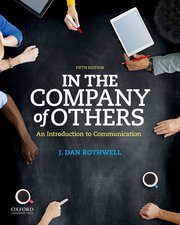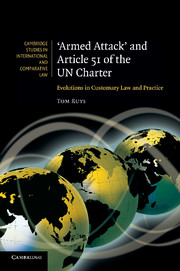Communication competence is vital for attaining most goals in life. In order to help students apply theoretical lessons to their own skills,In the Company of Others uses an organizing "communication competence model" to provide students with direction and guidance as they explore and improve their own communication processes.
Marked by J. Dan Rothwell's signature wit, this new edition engages students more than ever with its lively mixture of examples (drawn from pop culture, sports, and today's headlines), anecdotes, and illustrations. Focusing on the contexts of interpersonal, small group, and public communication, this introductory text integrates coverage of gender and culture throughout, giving these areas special attention early on in Chapter 3. Further discussions include cultural differences in perception and non-verbal meanings, cross-cultural friendships and romantic relationships, and gender and cultural bias in the workplace. In addition, the text incorporates coverage of technology and its impact on communication throughout. Topics include virtual groups, technology's effect on dating relationships, and the use of PowerPoint in public speaking. The book also features distinctive coverage of power, treating it as a central variable within all communication.
A unique blend of research, scholarly insight, and humor, In the Company of Others, Third Edition, is ideal for introductory communication courses.
SUPPLEMENTS
* Companion Website: Provides resources for both students (aids for speeches, research, web usage, study guides) and instructors (links to a variety of communication-related websites, chapter outlines, lecture assistance, student activities)
* Instructor's Manual: Includes an extensive Test Bank
* Instructor's Resource CD-ROM: Features PowerPoint lecture slides and a computerized Test Bank
* Student Success Manual: Offers study tips, chapter outlines and summaries, review questions, key terms, and critical thinking exercises
چکیده فارسی
شایستگی ارتباط برای دستیابی به اکثر اهداف در زندگی حیاتی است. به منظور کمک به دانشآموزان در کاربرد درسهای نظری برای مهارتهای خود،در شرکت دیگران از یک "مدل شایستگی ارتباطی" سازماندهی استفاده میکند تا به دانشآموزان هنگام کشف و بهبود فرآیندهای ارتباطی خود، جهت و راهنمایی ارائه دهد.
این نسخه جدید که با شوخ طبعی امضای جی. دان راثول مشخص شده است، دانش آموزان را بیش از هر زمان دیگری با ترکیبی سرزنده از مثال ها (برگرفته از فرهنگ پاپ، ورزش، و سرفصل های امروزی)، حکایات و تصاویر درگیر می کند. این متن مقدماتی با تمرکز بر زمینههای ارتباط بین فردی، گروهی کوچک و عمومی، پوشش جنسیت و فرهنگ را در سرتاسر ادغام میکند و در ابتدای فصل 3 به این حوزهها توجه ویژه میکند. بحثهای بیشتر شامل تفاوتهای فرهنگی در ادراک و معانی غیرکلامی، متقابل است. -دوستی فرهنگی و روابط عاشقانه و تعصب جنسیتی و فرهنگی در محل کار. علاوه بر این، متن شامل پوشش فناوری و تأثیر آن بر ارتباطات در سراسر جهان است. موضوعات شامل گروه های مجازی، تأثیر فناوری بر روابط قرار ملاقات و استفاده از پاورپوینت در سخنرانی عمومی است. این کتاب همچنین دارای پوشش متمایز قدرت است و آن را به عنوان یک متغیر مرکزی در تمام ارتباطات تلقی می کند.
ترکیبی منحصر به فرد از تحقیق، بینش علمی، و طنز، In the Company of Others, Third Edition، برای دوره های ارتباطی مقدماتی ایده آل است.
مکمل ها
* وبسایت همراه: منابعی را برای دانشآموزان (کمک برای سخنرانی، تحقیق، استفاده از وب، راهنماهای مطالعه) و مربیان (پیوند به انواع وبسایتهای مرتبط با ارتباطات، طرحهای فصل، کمک سخنرانی، فعالیتهای دانشجویی فراهم میکند. )
* راهنمای مربی: شامل یک بانک تست گسترده است
* سی دی رام منبع مربی: دارای اسلایدهای سخنرانی پاورپوینت و یک بانک تست کامپیوتری
* دفترچه راهنمای موفقیت دانشآموز: نکات مطالعه، خلاصههای فصل، سوالات مروری، اصطلاحات کلیدی و تمرینهای تفکر انتقادی را ارائه میدهد
ادامه ...
بستن ...
Ebook details:
عنوان: An Introduction to Communication
نویسنده: 9780190457426
ناشر: Oxford Univ Pr; 5 edition (January 15, 2016)
زبان: English
شابک: 0190457422, 978-0190457426
حجم: 33 Mb
فرمت: True Pdf
ادامه ...
بستن ...
Table of Contents
PART 1: FUNDAMENTALS OF COMMUNICATION
CHAPTER 1. COMPETENT COMMUNICATION
Benefits of Communication Competence
Social Connection: Communicating With Others
Workplace Benefits: Positions, Performance, and Promotion
Communication Improvement: All Can Benefit
Communication Myths
Myth 1: Communication Is a Cure-All
Myth 2: Communication Is Just Common Sense
Myth 3: Communication Quantity Equals Quality
Developing Communication Competence: Hindsight Bias Test
Defining Communication
Communication Is Transactional: The Evolving Perspective
Communication is a Process: The Continuous Flow
Communication Is Sharing Meaning: Making Sense
Defining Communication Competence
Effectiveness: Achieving Goals
Appropriateness: Communicating by the Rules
Achieving Communication Competence
Knowledge: Learning the Rules
Skills: Showing, Not Just Knowing
Sensitivity: Developing Receptive Accuracy
Commitment: Acquiring a Passion for Excellence
Ethics: Determining the Right and Wrong of Communication
Creating a Communication Climate
Types of Climates: Constructive and Destructive
Communication Patterns and Climates: Competition and Cooperation
Focus on Controversy: Ethics and Hypercompetitiveness
Summary
Quizzes Without Consequences
Film School Case Studies
CHAPTER 2. PERCEPTION OF SELF AND OTHERS
The Perceptual Process
Selecting: Forced Choices
Sensory Limitations: We're Mostly Blind and Deaf
Selective Attention: Bombarded By Stimuli
Organizing: Creating Schemas
Prototypes: Best Case
Stereotyping: Generalizing About Groups
Scripts: Predictable Behavior
Interpreting: Making Sense of Stimuli
Perception of Self
Self-Concept: Influence Others
Self-Esteem: Evaluating your Personal Identity
Influences on Self-Esteem: Appraisals, Comparison, and Contingencies
Self-Esteem Issues: Too Little or Too Much
Developing Communication Competence: How's Your Self-Esteem?
Focus on Controversy: Self-Esteem: More Is Not Always Better
Perceptual Distortion: Body Image and Self-Esteem
Self-Serving Bias: Protecting Your Self-Esteem
Optimal Self-Esteem: Pursuing Goals, Not Self-Esteem
Self-Disclosure: Revealing your Self to Others
Developing Communication Competence: Where Do You Draw the Line?
Perception of Others
First Impressions: You Never Get a Second Chance
Primacy Effect: Power Of First Impressions
Accuracy of First impressions: It Depends
Negativity Bias: Agile, Funny, Compassionate, and FAT
Attribution Error: Not So Kind to Others
Stereotyping Others: The Dangers
Unintended Prejudice: Instant Decision Making
Benevolent Sexism: The Façade of Positive Stereotyping
Self-fulfilling Prophecies: Creating Negative Consequences
Combating Stereotypes: Communication Solutions
Communication Competence and Perceptual Challenges
Monitor Perceptual Biases
Recognize Cultural Differences
Manage impressions
Practice Empathy
Check Perceptions
Summary
Quizzes Without Consequences
Film School Case Studies
CHAPTER 3. CULTURE AND GENDER
Culture and Communication
Intercultural opportunities: It's a New World
Cultural Values: Deep, Not Surface, Differences
Individualism-Collectivism: Prime Value Difference
Developing Communication Competence: Be Ye Individualist or Collectivist?
Power-Distance: Does Bill Gates Deserve Special Treatment?
Focus on Controversy: Competition - Cultural Influence
Relationship of Two Dimensions: Connecting the Dots
Intercultural Miscommunication
Ethnocentrism: Intercultural Prejudice
Ethnocentrism: Cultural Superiority Complex
Core Values and Ethnocentrism: Bedrock Cultural Bias
Cultural Relativism: Differences, Not Deficiencies
Multiculturalism: Recognition of Human Rights
Interpersonal Miscommunication: Not Knowing the Rules
Intercultural Communication Competence
Become Mindful: Monitor Your Communication
Become Acculturated: Strangers in a Strange Space
Reduce Uncertainty: Egads, Nothing's the Same!
Promote Convergence: Bringing Us Together
Gender and Communication
Masculine-Feminine Value Dimension: Rigidity Versus Flexibility
The Gender Differences Hypothesis: Mars and Venus - Really?
Social Support and Social Skills: Caring About and for Others
Negotiating for Salaries: Do You Want a Million Dollars?
Gender Similarities Hypothesis: united States and Canada
Explaining Gender Differences: No Consensus
Styles Perspectives: Status Versus Connection
Dominance Perspective: Unequal Power
Deficiencies Perspective: Communication Inadequacies
Communication Competence and Gender
Don't Magnify Gender Differences
Embrace the Value of Many Perspectives
Summary
Quizzes Without Consequences
Film School Case Studies
CHAPTER 4. LANGUAGE
The Nature of Language
Structure: Saying by the Rules
Phonology: Patterns of Sound
Morphology: Transforming Phonemes into Meaningful Units
Syntax: Word-Order Rules
Semantics: Rules of Meaning
Productivity: inventing World and Expressing Thoughts
Displacement: Beyond the Here and Now
Self-Reflexiveness: The Language or Language
The Abstracting Process
Sense Experience: Approximating Our Physical World
Description: Reporting the Approximation
Inference: Drawing Conclusions
Judgement: Conclusions that Assign Value
The Power of Language
Language and Thinking: Related but Different
Sapir-Whorf Hypothesis: Linguistic Imprisonment
Labeling: The Name Game
Framing: Influencing Choices
Identity: Languages R Us
Focus on Controversy: The Language of Texting: G9
Competent Language Use: Problems and Solutions
Signal Reactions: Responding, Not Thinking
Source of Signal reactions: Connotative Meaning
Developing Communication Competence: Measuring Connotative Meaning
Focus on Controversy: Verbal Taboos - A Question of Appropriateness
Competence Signal Reactions: Developing Semantic Reactions
Language of Abuse and Exclusion
False Dichotomies: The Inaccuracy of Either-Or Framing
Mislabeling: Inaccurate Descriptions
Bias and Stigma: Distorting Perceptions
Competence and Mislabeling: Operational Definitions
Dead-Level Abstracting: Ineffective Sense Making
Communication Competence and Dead-Level Abstracting: Three Ways
Inferential Errors: Ineffective Guessing
Developing Communication Competence: The uncritical Inference Test
Jargon, Euphemisms, and Slang: Promoting Misunderstanding
Jargon: Verbal Shorthand
Euphemisms: Linguistic Novocain
Slang: Casual Language
Summary
Quizzes Without Consequences
Film School Case Studies
CHAPTER 5. NONVERBAL COMMUNICATION
The Power of Nonverbal Communication
General Overview: Powerful, But Do Not Overstate
Culture and Nonverbal Communication: Some Challenges
Distinctions Between Verbal and Nonverbal Communication
Number of Channels: Single-Versus Multichanneled
Developing Communication Competence: nonverbal Communication Test
Degree of Ambiguity: No "Reading a Person Like a Book"
Discrete Versus Continuous: Stop and Go
Interconnectedness of Verbal and Nonverbal Communication
Repetition: Same Message, Different Channels
Accentuation: intensifying Verbal Messages
Substitution: no Words Necessary
Regulation: Conversational Traffic Cop
Contradiction: Mixed Messages
Types of Nonverbal Communication
Physical Appearance: Looks Matter
Physical Attractiveness: The Beauty Bias
Body Shape and Size: Universal Standards of Attractiveness
Body Adornments: Tattoos and Taboos
Clothing: Not Just for Warmth
Hair: Styling
Facial Communication: your Personal Billboard
Eyes: Your Personal Windows
Facial Expressions: The Look of Emotions
Gestural Communication: Bodies in Motion
Touch Communication: Hands-On Experience
Significance of Touch: Life Changing
Types of Touch: Function, Usage, and Intensity
Touch Taboos: Keeping Your Hands to Yourself
Competence and Touch: Some Suggestions
Voice Communication: How You Sound
Speech Communication: Distance and Territoriality
Distance: Defining Relationships
Territoriality: Defending Your Space
Environment: Creating Atmosphere
Focus on Controversy: Gated Communities - Fortress America
Communicating Competently with Nonverbal Codes
Monitor Nonverbal Communication
Resist Jumping to Conclusions
Observe Multiple Nonverbal Cues
Recognize Cultural Differences
Strive for Consistency
Summary
Quizzes Without Consequences
Film School Case Studies
CHAPTER 6. LISTENING TO OTHERS
Significance of Listening
The Listening Process
Comprehending: Discriminating for Understanding
Comprehending Phonemes: Discriminating Speech Sounds
Comprehending Words: Some Challenges
Retaining: Memories
Fallibility of Memory: You Can't Retain Everything
Benefits of Forgetting: Curse of the Infallible Memory
Why You Forget: Inattention, Meaninglessness, and De-motivation
Responding: Providing Feedback
Competent Informal Listening
Information Overload: Too Much of a Good Thing
Shift Response: Conversational Narcissism
Competitive Interrupting: Dominating Conversations
Glazing Over: The Wandering Mind
Pseudolistening: Faking It
Ambushed: Biased Listening
Active Listening: Focused Attention
Developing Communication Competence: Focused Attention
Competent Critical Listening
Skepticism, True Belief, and Cynicism: Differences
The Process of True Believing: Uncritical Listening
Confirmation Bias: Searching for Support
Rationalization of Disconfirmation: Clinging to Falsehoods
Shifting the Burden of Proof: Whose Obligation Is It?
The Skepticism Process: Exercising Competent Critical Listening
Possibility: Could Happen, but Don't Bet on It
Plausibility: Making a Logical Case
Probability: Likelihood of Events
Certainty: Without Exception
Self-Correction: Progressing by Mistake
Competent Emphatic Listening
Response Styles: Initial Response Patterns
Evaluative Response: Making Judgments
Advising Response: Telling Others How to Act
Interpreting Response: Explaining Meaning
Content-Only Response: Ignoring Feelings
Probing Response: Asking Questions
Supporting Response: Bolstering Others
Understanding Response: Paraphrasing and Perception Checking
Response Styles and Empathetic Listening: Making Choices
Empathetic Response Styles: Probing, Supporting, and Understanding
Nonempathic Responses: Evaluating, Advising, Interpreting, and Content-Only
Developing Communication Competence: Distinguishing Listening Responses
Choosing Competent Response Styles: Frequency, Timing, and Solicitation
Summary
Quizzes Without Consequences
Film School Case Studies
PART 2: INTERPERSONAL COMMUNICATION
CHAPTER 7. POWER
Definition of Power
The Nature of Power: No Powerless People
Forms of Power: Dominance, Prevention, and Empowerment
Power Struggles and Power Sharing: A Comparison
Communication Indicators of Power
General Indicators: Defining, Following, Opposing, and Inhibiting
Verbal indicators: Language Choices
Powerful and Powerless Language: Communicating Status
Gender and Cultural Influences: Powerful Language Differences
Nonverbal indicators: Silent Exercise of Power
Power Resources
Information: Scarce and Restricted
Expertise: Information Plus Know-How
Legitimate Authority: You Will Obey
Rewards and Punishments: Pleasure and Pain
Personal Qualities: A Powerful Persona
Problems of Power Imbalance
Power Sharing: Key to Relationship Success or Failure
Relationship Aggression: Battle for Dominance
Aggression Types: Direct and Indirect
Solutions: The Communication Link
Focus on Controversy: Gender and Relationship Aggression - A White-Hot Debate
Verbal and Nonverbal Abuse: Expressing Contempt
Sexual Harassment: When "Flirting" is Hurting
Commonplace Difficulties: Lighter Side
Competent Communication and Balancing Power
Dominance-Prevention: Competitive Power Balancing
Coalition Formation: Pooling Power
Defiance: Digging in Your Heels
Resistance: Dragging Your Feet
Empowerment: Exercising Positive Power
Developing Assertiveness: Neither Doormat nor Boot Wiper
Developing Communication Competence: Assertiveness Self-Assessment Questionnaire
Increasing Personal Power Resources: Expanding Choices
Employing Cooperative Argumentation: deliberations, Not Combat
Summary
Quizzes Without Consequences
Film School Case Studies
CHAPTER 8. MAKING RELATIONSHIPS WORK
Main Reasons for Forming Relationships
Need to Belong: Like Food and Water
Interpersonal Attraction: What Draws Us Together
Rewards: Exchange Theory
Forming Close Relationships
Intimacy and Love: Romantic Partners and Friends
Relationship Development: Coming-Together Phases
Developing Communication Competence: Recognizing Flirting Signals
Relationship Deterioration: Coming-Apart Phases
Sustaining Relationships: Lovers, Friends, Relatives, and Coworkers
Connecting Bids: Keeping Us Together
Emphasize Supportive Communication: How to Talk to Others
Developing Communication Competence: Reactions to Defensive and Supportive Communication
Defuse Defensiveness: When a Cooperative Climate Isn't Enough
Address Relationship Deterioration: Beyond Sustaining
Cross-Sex Friendships: Sustaining with Complications
Technology and Competent Interpersonal Relationships
Social Contact: Pros and Cons
Focus on Controversy: Addiction to Technology
Developing Communication Competence: Cell Phone Etiquette for the Competent Communicator
Online Romance: Cyberlove
Conflict: Electronic Flame Throwing
Developing Communication Competence: Netiquette
Intercultural Relationships and Communication Competence
Intercultural Friendships: Additional Challenges
Intercultural Romance: Tougher Than Friendships
Summary
Quizzes Without Consequences
Film School Case Studies
CHAPTER 9. INTERPERSONAL CONFLICT MANAGEMENT
Definition of Conflict
General Definition: Essential Elements
Types of Conflict: It's Not All Bad
Relationship Dialectics
Dialectics Within Relationships: Pushing Us/Pulling Us
Dialectics with Outsiders: Us and Them
Addressing Dialectics: Not a Balancing Act
Focus on Controversy: Ethical Conundrum: Is Honesty Always the Best Policy?
Communication Styles of Conflict Management
Collaborating: Looking for Win-Win Solutions
Accommodating: Yielding to Others
Compromising: Halving the Loaf
Avoiding: Ignoring Conflict
Competing: Power-Forcing
Managing Conflict Competently
Styles in Action: Smooth Sailing to White-Water Rafting
Culture and Conflict: Different Styles
Transforming Competing into Collaborating: Cooperation Revisited
Styles and Partner Abuse: Addressing Aggression
Anger Management: Controlling the Beast Within
Workplace Bullying: Conflict and Anger Meet
Forgiveness: Healing Conflict's Wounds
Summary
Quizzes Without Consequences
Film School Case Studies
PART 3: GROUP COMMUNICATION
CHAPTER 10. THE ANATOMY OF SMALL GROUPS
The Structure of Small Groups
Definitions: Setting the Scope
Group Size: Influencing Structure
Task and Social Dimensions: Productivity and Cohesiveness
Norms: Rules Governing Group Behavior
Roles: Expected Patterns of Behavior
Developing Communication Competence: Playing by the Roles: A Self-Assessment
Leadership
Defining Leadership: A Process of Influence
Leader Emergence: A Process of Elimination
Focus on Controversy: Gender and Ethnicity: Glass Ceiling or Glass Cliff?
Competent Leadership: Evolving Perspectives
Developing Communication Competence: What is your Leadership Style Preference?
Summary
Quizzes Without Consequences
Film School Case Studies
CHAPTER 11. CREATING EFFECTIVE GROUPS
Why Groups Succeed and Fail
Synergy: Creating Group Genius
Challenges That Can Impede Group Genius
Developing Communication Competence: Are You a Difficult Group Member?
Developing Communication Competence: Social Loafing: A Self-Assessment
Avoid Groupthink: Preventing Decisions Beyond Bad
Developing Competent Group Decision Making and Problem Solving
Structure Decision Making: Using the Standard Agenda
Employ Decision-Making Rules Competently: Making Choices
Developing Communication Competence: How to Achieve a Consensus
Manage Meetings Effectively: Stop Wasting Time
Developing Communication Competence: A Sample Agenda for Group Meetings
Enhance Creative Problem Solving: Becoming Unstuck
Teambuilding and Teamwork
Defining a Team: Not Just a Small Group
Establishing Team Goals: An Important First Step
Developing a Team Identity: Who Are You?
Designating Clear Team Roles: Avoid Duplication
Virtual Groups and Teams
Summary
Quizzes Without Consequences
Film School Case Studies
PART 4: PUBLIC SPEAKING
CHAPTER 12. PREPARING AND PRESENTING YOUR FIRST SPEECH
Addressing Speech Anxiety
Pervasiveness: You're Not Alone
Symptoms: Fight-or-Flight Response
Causes: Dysfunctional Anxiety
Strategies: Managing Anxiety
Audience Analysis
Types of Audiences: The Five Cs
Audience Composition: Making Inferences
Topic Choice and Analysis
Potential Topics: Important Choice
Appropriateness of Topic: Blending Topic and Audience
Narrowing the Topic: Recognizing Constraints
Researching the Topic
The Internet: First Stop
Libraries: Bricks-and-Mortar Research
Focus on Controversy: Wikipedia: Credible Scholarship or Mob Rule?
Interviewing: Questioning Experts
Competent Outlining and Organizing
Effective Outlining: Making Sense
Effective Organization: Creating Patterns
Developing Communication Competence: A Student Outline: Rough Draft and Revision
Developing Communication Competence: Examples of Signposts and Transitions
Competent Delivery of Speeches
Methods of Delivery: The Big Four
Developing Competent Delivery
Summary
Quizzes Without Consequences
Film School Case Studies
TED Talks and YouTube Links
CHAPTER 13. BUILDING BETTER SPEECHES
Gaining and Maintaining Attention
Attention Strategies: Involuntary Triggers
Effective Introductions and Conclusions
Objectives for Competent Introductions
Objectives for Competent Conclusions
Developing Supporting Materials
Examples: Various Types and Effectiveness
Statistics: Quantifying Your Points
Evaluating Supporting Materials: Criteria
Competent Style of Presentation: A Signature Event
Oral Versus Written Style: An Essay Is Not a Speech
Standards of Competent Oral Style: The Language of a Speech
Summary
Quizzes Without Consequences
Film School Case Studies
TED Talks and YouTube Links
CHAPTER 14. INFORMATIVE SPEAKING
Distinguishing Informative from Persuasive Speaking
Noncontroversial Information: Staying Neutral
Precursor to Persuasion: No Call to Action
Types of Informative Speeches
Reports: Facts in Brief
Explanations: Deeper Understanding
Demonstrations: Acting Out
Narratives: Storytelling
Comparisons: Pros and Cons
Guidelines for Competent Informative Speaking
Inform: Tell Us What We Don't Know
Adapt: Audience Analysis
Clarify Key Terms: Definitions
Supporting Materials Revisited: Additional Advice
Avoid Information Overload: Don't Drown in Data
Tell Your Story Well: Narrative Tips
Developing Communication Competence: Outline and Text of an Informative Speech
Visual Aids
Types: Benefits and Drawbacks
Media: Simple to Complex Technology
Focus on Controversy: PowerPoint: Lots of Power, Little Point?
Guidelines: Aids, Not Distractions
Summary
Quizzes Without Consequences
Film School Case Studies
TED Talks and YouTube Links
CHAPTER 15. PERSUASIVE SPEAKING
Foundations of Persuasion
Coercion Versus Persuasion: Choice
Attitude-Behavior Consistency: Variables
Goals of Persuasion
Elaboration Likelihood Model: Mindful or Mindless Persuasion
Culture and Persuasion: A Question of Values
Persuasive Speaking Strategies
Establish Identification: Connecting with Your Audience
Build Credibility: Can We Believe You?
Build Arguments: Persuasive Logic and Evidence
Use Emotional Appeals: Beyond Logic
Induce Cognitive Dissonance: Creating Tension
Use the Contrast Effect: Minimize the Magnitude
Use a Two-Sided Strategy: Refutation
Developing Communication Competence: A Sample Outline and Persuasive Speech
Summary
Quizzes Without Consequences
Film School Case Studies
TED Talks and YouTube Links
Appendix A: INTERVIEWING
Appendix B: SPEECHES FOR SPECIAL OCCASIONS
ادامه ...
بستن ...










